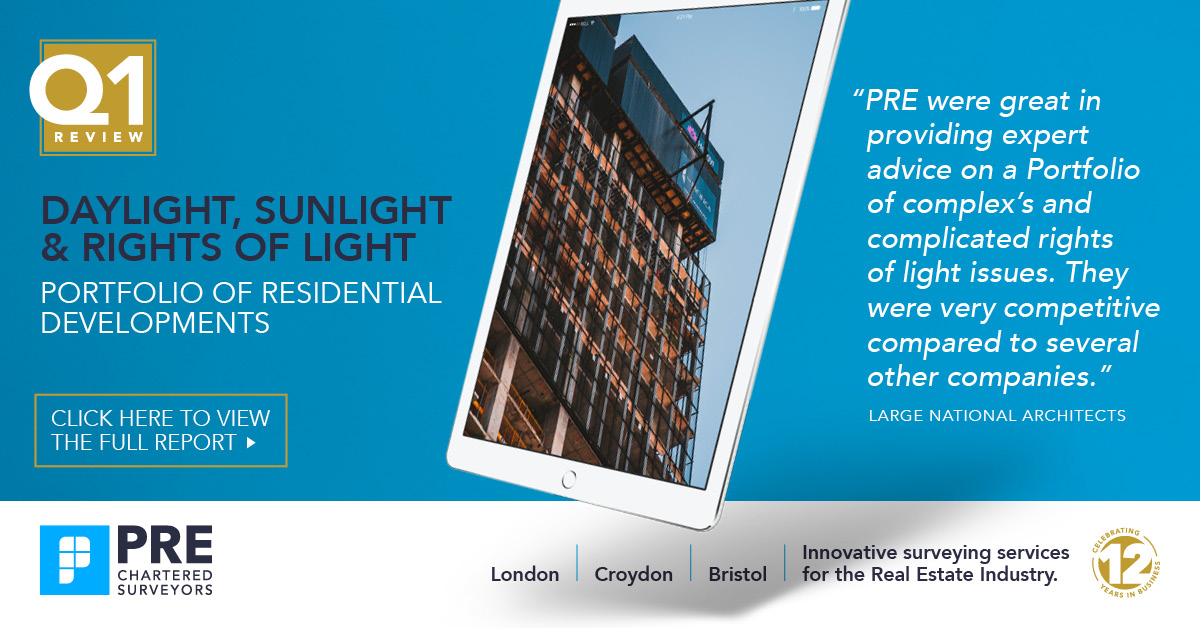In the field of property construction, the concept of "Right to Light" stands a critical factor that can significantly influence the outcomes of a development. As grow denser and land increases in worth, understanding the implications of light rights is crucial for those in the field. An Right to Light survey may help determine the possible effects of a new project could have on current buildings and their access to natural light. This factor not only affects the aesthetics and experience of spaces but also plays a key role in adhering to laws and development approvals.
The importance of conducting a Right to Light survey must not be undervalued. Given the potential for conflicts with neighboring properties lurking around every corner, neglecting to heed the rights of light could lead to costly legal conflicts and project delays. Steering through the legal frameworks regulating light rights demands expertise and foresight, making it vital for property developers to have expert team members on their team. In this article, we will delve into the details of Right to Light surveys, including their importance in building design, the survey process itself, and the legal considerations that may influence your initiative.
Understanding The Right to Light
The right to light is a legal concept that grants property owners the right to receive natural light through designated openings, such as windows and skylights. This right can arise from long-term use, where a property has benefited from unobstructed light for a certain period, usually 20 years. The concept is grounded in common law and is mainly concerned with mediating the interests of property owners and their neighbors, ensuring that developments do not unduly obstruct light and, consequently, influence the enjoyment and value of the affected properties.
In the context of property development, understanding right to light is essential for developers to manage potential disputes that may occur when constructing new structures or making major alterations to existing properties. Right To Light Aldwych assesses the impact of a proposed development on neighboring properties' light access and identifies any potential violations. Such assessments are vital in the initial phases of planning to avoid legal challenges and ensure smoother project execution.
The implications of the right to light go beyond just legal compliance; they can also influence the financial viability of property developments. Failure to account for light rights can lead to costly modifications or the need for compensatory measures, such as financial settlements or redesigns. Therefore, engaging with right to light specialists during the planning phase is essential for developers to protect both their interests but also to uphold good relationships with neighbors and comply with local planning guidelines.
Impact on Property Development
A Right to Light is an critical consideration in property development, because it directly influences the practicality of projects. Developments that restrict natural light to neighboring properties can lead to objections from affected parties, that may delay or halt progress. Consequently, developers must evaluate light access early in the planning stages to avoid costly repercussions that can arise from neglected light rights issues.
Grasping the implications of a Right to Light survey can significantly impact project design and planning approvals. By assessing light access, developers can identify potential conflicts and tackle them proactively, which may include modifying designs or entering in negotiations with neighbors. This foresight not only eases the path to obtaining planning permission but also nurtures better relationships with the community, demonstrating a commitment to high-quality development that considers existing residents' needs.
Moreover, legal disputes over light rights can be detrimental to both developers and neighbor, leading to prolonged litigation and unforeseen expenses. Engaging in proactive Right to Light assessments helps reduce these risks by clarifying legal standings and indicating potential compensation options. Ultimately, understanding and respecting light rights can streamline the development process and contribute to successful, harmonious projects that enhance the urban environment.
Assessment Process and Optimal Practices
Conducting a Right to Light survey is essential in evaluating the effect of a proposed development on adjacent properties. The process generally begins with a thorough site visit and an assessment of the surrounding structures. Surveyors use specific tools and techniques, including sunlight and daylight analysis software, to assess the possible impact on light access for adjacent buildings. Accurate data collection is crucial, and it often involves measuring the dimensions of existing buildings, identifying their orientation, and considering surrounding factors that might influence light levels.

Once the initial assessment is completed, a comprehensive report is prepared, which includes findings from the evaluation. This report should emphasize any potential infringements on adjacent properties' right to light. Utilizing 3D modeling can significantly enhance the clarity of the analysis by providing graphic representations of how a proposed development will affect light exposure. Additionally, adhering to the Building Research Establishment (BRE) guidelines plays a crucial role in making sure that the analysis complies with industry standards and legal requirements.
Optimal practices in the survey process also involve open communication with affected parties. Consulting with adjacent property owners early in the development timeline can help resolve concerns and minimize disputes. Additionally, documenting all findings and decisions made during the survey can act as protection for developers should legal challenges arise. Ultimately, Right To Light Aldwych -thinking approach to Right to Light surveys not only assists in compliance but also builds positive relationships within the community.
